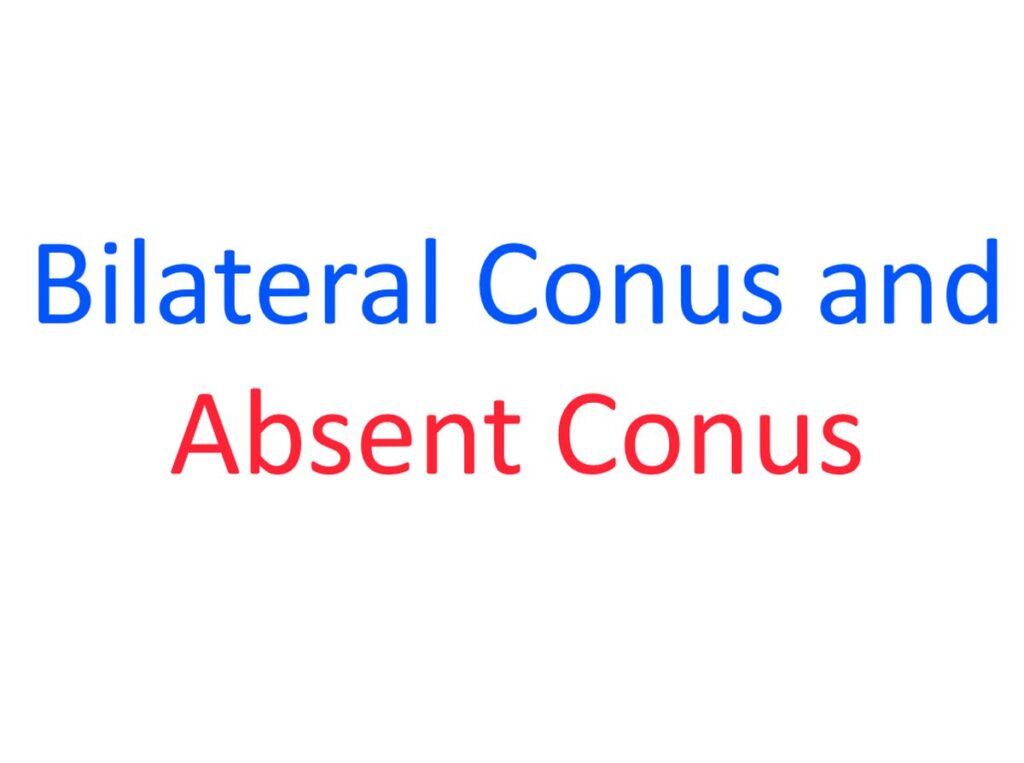Bilateral conus and Absent conus
Bilateral conus is seen in double outlet right ventricle. Conus is manifest as a semilunar valve – AV valve discontinuity with the conus tissue in between. In normal heart conus is seen below the pulmonic valve, but not below the aortic valve, so that there is mitral-aortic continuity and tricuspid-pulmonary discontinuity.
Bilateral conus is also present in Taussig Bing anomaly which is a variant of double outlet right ventricle [1]. Both conal free walls are muscular and well developed. The muscular conal free walls prevent atrioventricular valve semilunar valve fibrous continuity. About 9 mm of conal tissue separate the pulmonary valve from the mitral valve. There is transposition of great arteries in Taussig Bing Anomaly. Tricuspid valve is separated from the aortic valve by a conal muscular tissue of about 8 mm.
In general it is often mentioned that absent conus is seen in dextro transposition of great arteries. But a study which reported conal anatomy in 119 patients with D-loop transposition of great arteries and ventricular septal defect reported different findings [2]. 88.2% had subaortic conus with no subpulmonary conus. Subarterial conus was seen bilaterally in 6.7% cases. 3.4% had only subpulmonary conus with minimal or no subaortic conus. Subarterial conus was bilaterally absent in only 1.7%. This variability in conal anatomy in D-TGA with VSD implies four different mechanisms by which transposition occurs.
References
- Van Praagh R. What Is the Taussig-Bing Malformation? Circulation. 1968 Sep;38(3):445-9.
- L Pasquini, S P Sanders, I A Parness, S D Colan, S Van Praagh, J E Mayer Jr, R Van Praagh. L Pasquini, S P Sanders, I A Parness, S D Colan, S Van Praagh, J E Mayer Jr, R Van Praagh. Conal Anatomy in 119 Patients With D-Loop Transposition of the Great Arteries and Ventricular Septal Defect: An Echocardiographic and Pathologic Study.
J Am Coll Cardiol. 1993 Jun;21(7):1712-21.


